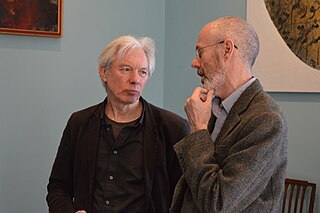
The Star Carr Frontlets (also known as the Star Carr Headdresses) are a series of modified deer skulls, probably worn by people, from the Mesolithic site at Star Carr in North Yorkshire.

The Star Carr Frontlets (also known as the Star Carr Headdresses) are a series of modified deer skulls, probably worn by people, from the Mesolithic site at Star Carr in North Yorkshire.
The site at Star Carr was first excavated in 1949 by Grahame Clark. He found the first headdresses at this time and their discovery was published in the 1954 monograph Excavations At Star Carr: An Early Mesolithic Site at Seamer Near Scarborough, Yorkshire. A total of 21 headdresses made from red deer skulls were found in this excavation and these were donated to the British Museum, Museum of Archaeology and Anthropology, University of Cambridge, and the Rotunda Museum. A later series of excavations led by Nicky Milner, Chantal Conneller, and Barry Taylor from 2004 to 2010 and then 2013–2015 discovered a further twelve red deer frontlets as well as some roe deer examples.
Since the first discoveries at Star Carr, antler frontlets have been found at ten prehistoric sites in northern Europe. [1]
A 2016 scientific paper published in PLOS ONE , and led by Aimée Little, discussed a technological analysis of creating a red deer headdress. In it, the authors summarised a manufacturing sequence of a headdress: "a mature red deer male was killed in autumn or winter before the antlers were shed. The head was removed, probably superficially cleaned, before work commenced on producing the headdress. The first stage of the process may have been focused on the beams to remove a large amount of antler, some of which may have formed ‘blanks’ for the production of barbed projectile tips which were then used to hunt and fish... at this point there are two diverging hypotheses: a tool was used to chop through the skin, initiating the de-skinning process; or the skin was left on, the upper half of the cranium covered with damp clay, before being placed into the embers of a fire. The skull was subsequently retrieved, and the charred bone removed using a small hammerstone. After removing the clay, the skin (if remaining) was peeled away from the frontal and parietal bones...Perforations on each side of the cranium were made using a hand-held flint core tool." [2]
The frontlets have been interpreted as functioning as headdresses based on the reduction of the antlers to make them lighter, the inclusion of perforations for a strap or cord to be attached, and the smoothing of the interior of the braincase for a more comfortable fit on a human head. [3] In his original 1954 work Clark also suggested that they could have functioned as disguises for hunting deer or as costumes for ritualised dancing. [4] Conneller argued that the headdresses could have "facilitated a bodily transformation". She argues that this was not a literal transformation into deer, but something that affected change in a human by taking on the effects of an animal. [5]
Frontlets have been on public display in museums where they are held. Perhaps the most famous frontlet, in the British Museum, has frequently been on display in that museum and elsewhere. In 2006–2007 it was in the Westfalisches Museum für Archäologie (Bonn, Germany). In 2012 it featured in the Shakespeare: Staging the World exhibition at the British Museum, and then was again exhibited there in 2022 during The World of Stonehenge exhibition. [6]
A frontlet is in the collection of the Rotunda Museum, where it is in public display. [7]
The frontlet in the collection of the Museum of Archaeology and Anthropology was recently on display in an exhibition titled A Survival Story: prehistoric life at Star Carr (21 June 2018 – 19 April 2020) along with a headdress from the recent excavations. [8] [9]
The frontlets discovered in the 2004–2015 excavations are in the collection of the Yorkshire Museum. Four frontlets went on display as part of the After the Ice: Yorkshire's Prehistoric People exhibition in 2012. [10] A large group of frontlets will be displayed from March 2024 in the Star Carr: Life after the Ice exhibition at the museum. [11]
In 2017 Royal Mail issued a £1.05 stamp featuring a person wearing one of the Star Carr Frontlets. [12] [13]

The Mesolithic or Middle Stone Age is the Old World archaeological period between the Upper Paleolithic and the Neolithic. The term Epipaleolithic is often used synonymously, especially for outside northern Europe, and for the corresponding period in the Levant and Caucasus. The Mesolithic has different time spans in different parts of Eurasia. It refers to the final period of hunter-gatherer cultures in Europe and the Middle East, between the end of the Last Glacial Maximum and the Neolithic Revolution. In Europe it spans roughly 15,000 to 5,000 BP; in the Middle East roughly 20,000 to 10,000 BP. The term is less used of areas farther east, and not at all beyond Eurasia and North Africa.

Star Carr is a Mesolithic archaeological site in North Yorkshire, England. It is around five miles (8 km) south of Scarborough. It is generally regarded as the most important and informative Mesolithic site in Great Britain. It is as important to the Mesolithic period as Stonehenge is to the Neolithic period or Scandinavian York is to understanding Viking Age Britain.

The Magdalenian cultures are later cultures of the Upper Paleolithic and Mesolithic in western Europe. They date from around 17,000 to 12,000 years ago. It is named after the type site of La Madeleine, a rock shelter located in the Vézère valley, commune of Tursac, in France's Dordogne department.

Sir John Grahame Douglas Clark, who often published as J. G. D. Clark, was a British archaeologist who specialised in the study of Mesolithic Europe and palaeoeconomics. He spent most of his career working at the University of Cambridge, where he was appointed Disney Professor of Archaeology from 1952 to 1974 and Master of Peterhouse from 1973 to 1980.
The year 1954 in archaeology involved some significant events.

The Vale of Pickering is a low-lying flat area of land in North Yorkshire, England. It is drained by the River Derwent. The landscape is rural with scattered villages and small market towns. It has been inhabited continuously from the Mesolithic period. The present economy is largely agricultural with light industry and tourism playing an increasing role.

The Yorkshire Museum is a museum in York, England. It was opened in 1830, and has five permanent collections, covering biology, geology, archaeology, numismatics and astronomy.
Events from the prehistory of Britain.
Sir Paul Anthony Mellars was a British archaeologist and professor of prehistory and human evolution at the University of Cambridge.

Evidence of human activity during the Mesolithic period in Irish history has been found in excavations at the Mount Sandel Mesolithic site in the north of the island, cremations on the banks of the River Shannon in the west, campsites at Lough Boora in the midlands, and middens and other sites elsewhere in the country.

Michael W. Pitts, is an English freelance journalist and archaeologist who specialises in the study of British prehistory. He is the author of several books on the subject, and is the editor of British Archaeology, the publication of the Council for British Archaeology.
Bedburg-Königshoven is a Mesolithic site where two head-dresses were discovered from Red deer antlers and skulls. They are often believed to be the oldest traces of shamanic and religious behaviour.
Nicola Jane Milner is a British archaeologist and academic. She is head of the Department of Archaeology at the University of York. Her research focuses on the Mesolithic period, and the transition between the Mesolithic and Neolithic. She has worked at the iconic site of Star Carr in the Vale of Pickering for over 15 years, and has directed excavations at the site since 2004.
Peter Woodman was an Irish archaeologist specialising in the Mesolithic period in Ireland. He was a professor emeritus at University College Cork and a former keeper of the Ulster Museum.
Belderrig is a small village on the North Mayo coast, and lies within the Céide Fields complex, a prehistoric landscape of field systems and related domestic and ritual structures dating to the Neolithic and Bronze Age. The excavations at Belderrig were initiated by Graeme Warren, School of Archaeology, University College Dublin, Ireland, after visiting the site in 2003 with its discoverer, the archaeologist Seamas Caulfield.

The Star Carr Pendant is a unique engraved shale pendant from the Mesolithic site of Star Carr in North Yorkshire. It has been described as the oldest Mesolithic art in Britain.
Donald "Don" Henson was a British archaeologist and prehistorian, specialising in public archaeology.
The Fifield Site (Pr-55) is located on Damon Run Creek in Porter County, north-western Indiana. It is classified as a late prehistoric, single-component Upper Mississippian Fisher village.
The Bad Dürrenberg burial is a Mesolithic double burial of a woman and baby near the modern town of Bad Dürrenberg, in Saxony-Anhalt, Germany. The grave was discovered on 4 May 1934 by workmen laying a water pipe in a spa garden beside the Saale river. It was excavated in one day under the direction of Wilhelm Henning, a conservator at the Halle State Museum of Prehistory. No photographs were taken of the burial due to time pressure; the only records are written descriptions and sketches which do not record the exact positions of the bodies and objects.
Chantal Conneller (b.1973) is an archaeologist and Professor of Early Prehistory at the University of Newcastle.